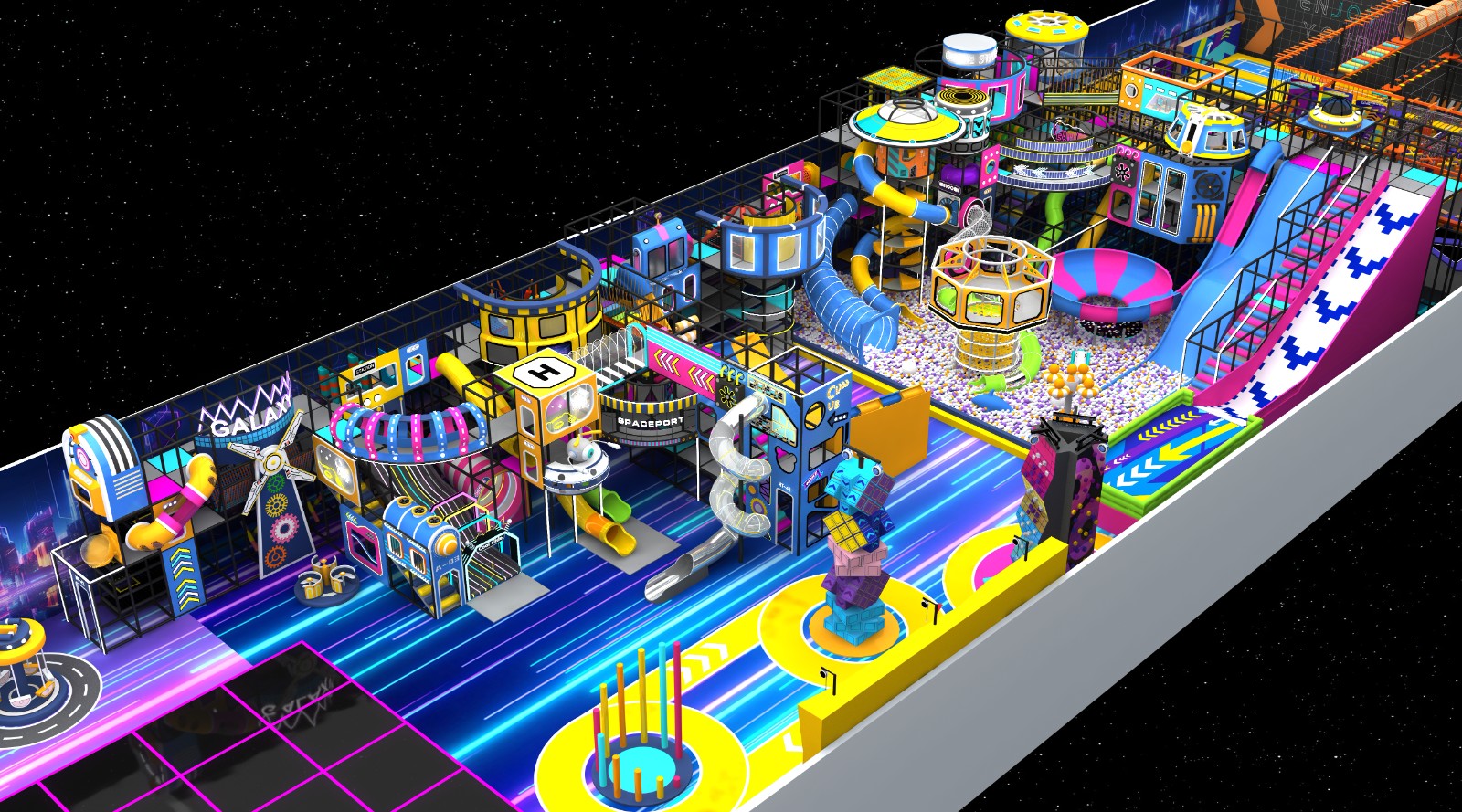Please contact us!
En

Indoor playgrounds come in different types, each with its own price bracket:
Basic Soft Play Areas: Designed primarily for toddlers, these include foam blocks, mats, and simple structures. Prices for basic setups typically range from $20,000 to $50,000.
Indoor Adventure Parks: Featuring climbing structures, zip lines, and multi-story play systems, these can cost over $1 million, depending on the complexity and size.
Size: Larger playgrounds with more expansive play zones and varied equipment will naturally come with higher costs.
Location: Indoor playgrounds located in high-demand areas, such as popular tourist destinations or shopping malls, may face higher operating costs and rent, raising the overall investment.
The materials used significantly impact the price. High-quality, durable materials such as reinforced plastics, stainless steel, and commercial-grade fabrics not only ensure safety but also longevity. Custom-built designs or unique features (e.g., themed play areas) will drive up costs due to the need for specialized labor and materials.
Interactive elements, sound systems, lighting, and safety features such as padded flooring, safety nets, and CCTV surveillance contribute to the overall cost but are essential for creating a safe and engaging environment.
Indoor playgrounds cater to a wide range of commercial, educational, healthcare, and residential scenarios. The specific needs of each application influence the design and associated costs:
Shopping Malls: Attract families by providing a safe, entertaining environment for children.
Indoor Amusement Parks: Feature diverse play options in one location, making them a key attraction.
Family Entertainment Centers: Combine various activities, making them a popular destination for families.
Hotels and Resorts: An indoor playground enhances family appeal, attracting more guests.
Nursery Schools and Preschools: Designed to foster physical, social, and cognitive development in a secure setting.
Kindergartens: Equipped to support physical skill development and group play.
Hospitals and Clinics: Help children cope with medical treatments by providing an outlet for stress and boredom.
Therapy Centers: Used for therapeutic play, assisting in emotional and physical development, especially for children with special needs.
Family-Friendly Offices: Encourage productivity by offering children a fun space to play while parents work.
Community Centers: Offer accessible play options for families in underserved areas.
Private Homes and Luxury Apartments: Some affluent homes or apartment complexes install indoor playgrounds to offer children a safe and fun environment indoors.
Before making a purchase, it’s important to evaluate several factors that can impact both cost and functionality.
Ensure the indoor playground fits comfortably in the available space. A well-designed layout helps maximize the area, allowing children to play safely without feeling cramped.
Select equipment appropriate for the targeted age group. For toddlers, the focus should be on safe, simple play elements, while older children may enjoy more challenging structures.
Safety is paramount in any playground. Look for features such as non-slip surfaces, safety rails, padded flooring, and rounded edges to minimize the risk of injury.
Consider the types of activities children will engage in, such as climbing, sliding, ball pits, or interactive games. A variety of activities will cater to different interests and skill levels.
While initial costs may be high, investing in quality indoor playground equipment can lead to long-term benefits, as durable equipment minimizes the need for frequent repairs or replacements.
Opt for equipment that is easy to maintain and clean. Choosing materials that resist wear and tear ensures the playground remains safe and operational for longer periods.
Indoor playgrounds serve as interactive spaces for children, promoting physical and mental development through play.
Indoor playgrounds are designed to:
Provide a safe environment for children to play and engage in physical activity.
Stimulate both mental and physical growth through challenging and fun activities.
Durable Materials: Soft and resilient materials like foam blocks and synthetic fabrics ensure safety during play.
Interactive Elements: Features such as spinning wheels and tactile panels can increase engagement.
Safety Measures: Non-slip surfaces, safety rails, and enclosed spaces are essential to minimize accidents.
Age-Appropriate Design: Equipment is tailored to the child’s age to ensure they have a fulfilling and safe experience.
Modular Systems: Flexible systems that can be easily customized and adapted to any space.
Soft Play Areas: Large, cushioned areas ideal for younger children to explore safely.
Activity Centers: Combine various activities in a single area, such as ball pits, slides, and climbing structures.
Interactive Play Systems: Incorporate digital sensors to make play more engaging (typically more expensive).
The average price ranges from $50 to $150 per square foot, depending on the complexity of the design and the quality of materials used.
Key factors include the size, type of equipment, materials, customization, safety features, and installation costs.
Yes, regular maintenance is necessary to ensure safety, cleanliness, and functionality. Routine inspections and proper upkeep help extend the life of the equipment and ensure a safe experience for children.
This revised version is more concise, easy to read, and optimized for both SEO and user understanding. It emphasizes key pricing factors and scenarios where indoor playgrounds are used, helping potential buyers make informed decisions.
Copyright Wenzhou Dream Garden Amusement Equipment Co.,Ltd | Sitemaps|Xml
|Please contact us!

